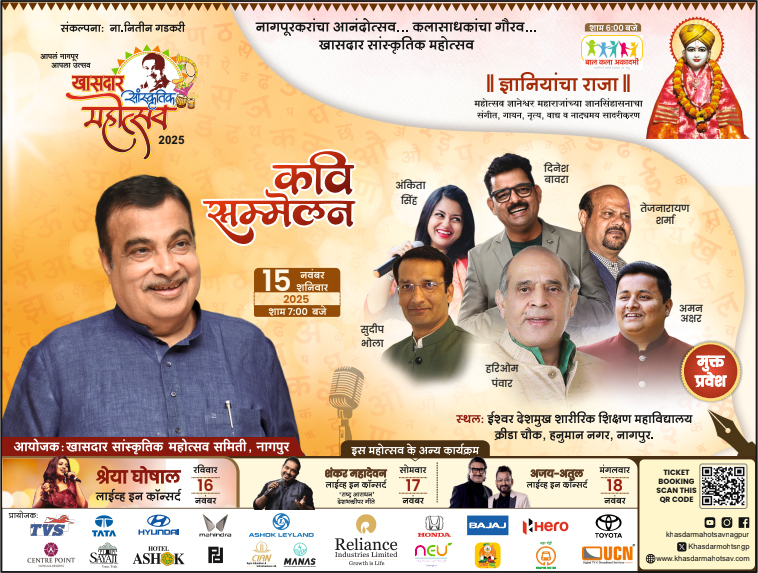Mumbai: Sitting on a broken cot carelessly placed on a footpath under the Kalina-Vakola flyover in suburban Mumbai, 65-year-old Narmada Kakade pointed to the extreme left on the opposite side of the street. Moving her finger from one end of the street to another, Kakade showed the spots where she and 29 other families, most of them Dalits, have squatted over the past 30 years. “I have lost count of the number of times we have built our huts on these footpaths and the times when they have been bulldozed,” she said.
On March 9, their makeshift homes were demolished in the latest in the series of eviction drives carried out by the Brihanmumbai Municipal Corporation (BMC). The modus operandi was familiar – bulldozing their huts, forcibly taking away their belongings, dumping debris in those spots to prevent any rebuilding and finally placing pots of saplings to beautify the stretch. All this to ensure no slum dwellings fell in the sight of Prime Minister Narendra Modi and President Pranab Mukherjee’s convoy, which passed by the flyover on March 17 en route to a media conclave in Mumbai’s western suburbs.
Assistant municipal commissioner Govind Garule confirmed the incident. “They have illegally occupied the footpaths and most times spill on the road. When some VIPs visit the city, we are bound to take measures to remove them from the footpath,” he said.
Jamila Shaikh, 40, who shifted here nearly two decades ago from Solapur district, said a team of BMC officials – under heavy police bandobast (protection) – came knocking at their huts on March 9, asking them to move away from the pavement and return only after two weeks. No eviction notice or prior intimations were given to anyone. Shaikh’s hut was razed to the ground. She alleged all her belonging were either destroyed or seized by the BMC workers. But it is the impact on the education of her 10-year-old son Arsalad that pains her the most. “My son is studying in class 5 in the nearby BMC school. They did not even spare his school bag. We kept pleading, but they did not budge. My son has not been to school ever since,” she said, as Arsalad stood next to her listlessly. “I had my exam today. But I could not attend. I have no books or uniform to wear to school,” he said. Shaikh is a single mother and, like most people living on the footpath under the Kalina-Vakola flyover, works as a rag picker. She makes anything between Rs 100-150 per day.
“Since the demolition, we have been cooking and eating in these broken utensils,” she added, pointing to a cracked bowl and plate strewn near a makeshift stove she has built, using bricks and firewood. With no spare clothes left, Shaikh told this reporter that she has been wearing the same saree and blouse ever since the eviction.
In the neighbouring house of Champabai Waghmare, a child was born just two days before the eviction. Instead of celebrating the birth, the family is now forced to live in the open with the infant. “Just hours before the demolition, I had returned home from the hospital with my daughter and her new born. They drove us away from our houses. My daughter and her child were forced to take shelter under the flyover,” Waghmare said. She alleged that her belongings, the child’s medicines and doctor’s prescription were all destroyed during the eviction. The bitter irony is that Waghmare’s daughter Sangeeta and son-in-law Ramsingh Gaikwad work as conservancy workers on contract with the civic body.
Permanent ‘migrant’ status
In the early 1990s, several draught-affected landless families from Jalna district had migrated to Mumbai. Some settled in the existing slums in the suburban parts of the city and others on the street side making the footpath their homes. Most families living here work as daily wage labourers, contributing a significant deal to the city’s sanitation and development work. These families primarily work as waste collectors; some work as conservancy workers with the civic body, and a few others at the construction site. The old and disabled beg for their living.
There is an arbitrary but official ‘cut-off date’ for regularisation of these slums. “Whoever came to the city before the cut- off date of January 1, 2000 can claim tenure on the land they live. All 30 families have migrated here well before the cut-off, but with inadequate legal papers, they are unable to establish their existence in the city before the cut-off,” said Bilal Khan of Ghar Banao Ghar Bachao, a collective that is fighting for the housing rights of the urban poor. With the help of the collective, the affected families have moved the National Human Rights Commission last week against the recent eviction. They have demanded compensation and restoration of their constitutional right to life, education and dignity.
Khan says this is not the first time that the community members have moved the rights commission. “After one such eviction drive in 2013, these affected families had moved the Maharashtra State Human Rights Commission. The case is scheduled for hearing next week. When houses are destroyed, one expects the State and the justice system to intervene immediately. But here they have to wait for three years to even have a hearing in the court. In all this justice seems like a distant dream,” said Khan.
Modern day untouchability
Simpreet Singh, a city-based researcher studying the histories of Mumbai’s working classes, says these arbitrary evictions are a manifestation of modern day untouchability. Singh has extensively worked on the housing rights of slum dwellers. He points to the civic authorities’ dependency on these community members and availability of “cheap labourers”. “In most instances you would see, these huts are demolished for a few days and soon after allowed to be rebuilt, if not in the same location, then, a few metres away. From sanitation work to road construction, the civic bodies are highly dependent on these homeless people.”
But when some VIP is to pass by that street, Singh says, the authorities try to ‘invisibilise’ the slum dwellers by forced eviction. “Eviction causes serious deprivation to the lives of affected families, further marginalising them,” he adds.
Like most homeless in the city, these families too are a part of the labour force that works in the unorganised sector. Working at construction sites, as domestic helps, sewage cleaners or porters earns them their living, but leave them highly vulnerable at the mercy of their employers. “Although, almost every adult member of these families is employed in some or other work, none of them any income certificate to show. That tells us how precarious their working conditions are,” Khan explained.
Unsafe nights
Losing the roof over their heads does not only mean sleeping in the open, but also exposing oneself to the constant threats lurking around. In such situations, Suman Navghire says women are most affected, with their privacy highly compromised. Navghire and a few others take turns in staying up at night to ward off any danger. “Randomly men come and stop their vehicles here. They leer at our young girls. During the daytime, we are able to shoo them away. But at nights, it becomes difficult. So someone from the basti does vigil in the night,” said Navghire.
















